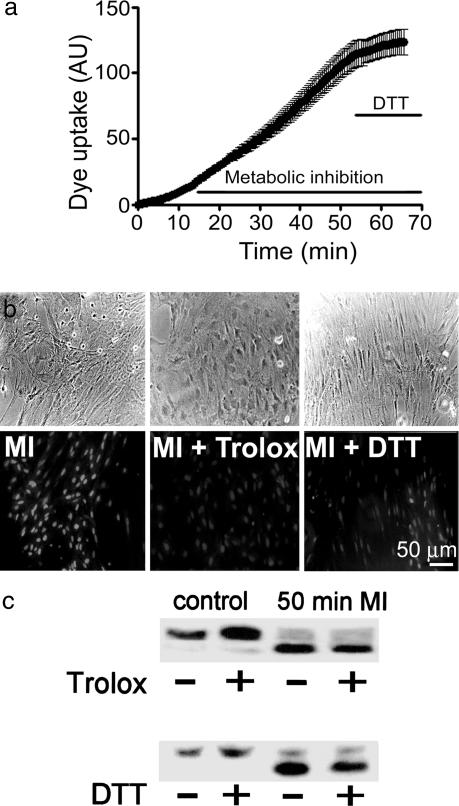Fig. 2.
Dye uptake but not Cx43 dephosphorylation induced by MI is reduced by antioxidants. (a) Time-lapse measurements of EtdBr (10 μM) uptake during MI. Later application of 10 mM DTT reduced the rate of uptake. Mean and standard error of >20 cells in an experiment representative of seven. (b) Phase micrographs (Upper), fluorescence (Lower), from a different experiment. Astrocytes after 50 min of MI showed prominent EtdBr (100 μM) uptake during a 5-min application of the dye (MI). In sister cultures with 100 μM Trolox (MI + Trolox) added 20 min or 10 mM DTT (MI + DTT) added 10 min before the end of 50 min of MI, the dye uptake was greatly reduced (n = 3). (c) Western blot analysis of cell surface Cx43 pulled down with biotin from control astrocytes incubated for 20 min with or without Trolox (Upper Left) or 10 min with or without DTT (Lower Left) or from astrocytes subjected to 50 min of MI without or with application of 100 μM Trolox 20 min (Upper) or 10 mM DTT 10 min before the end of the period of inhibition (Lower). Representative results of three experiments are shown. The reducing agents did not prevent dephosphorylation of surface Cx43 induced by MI.

